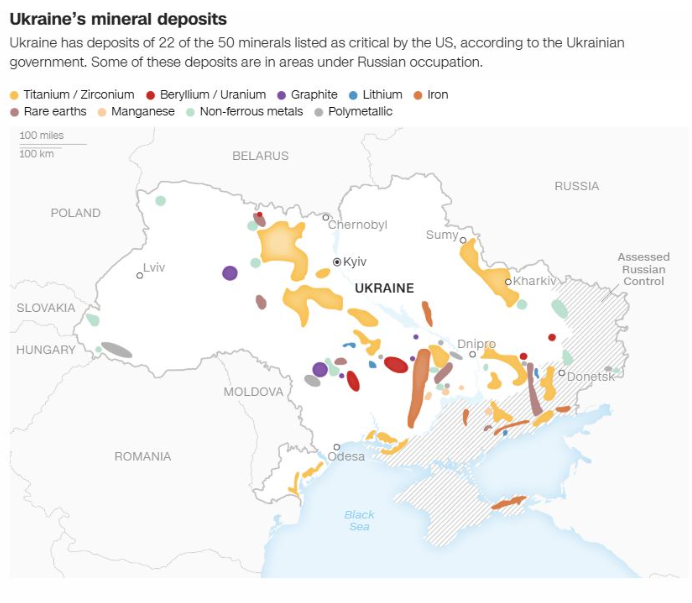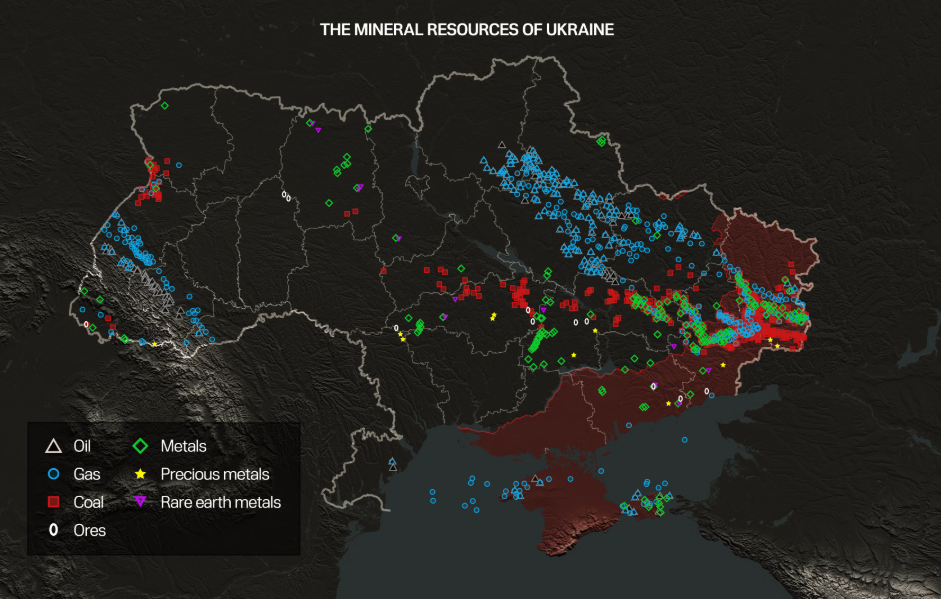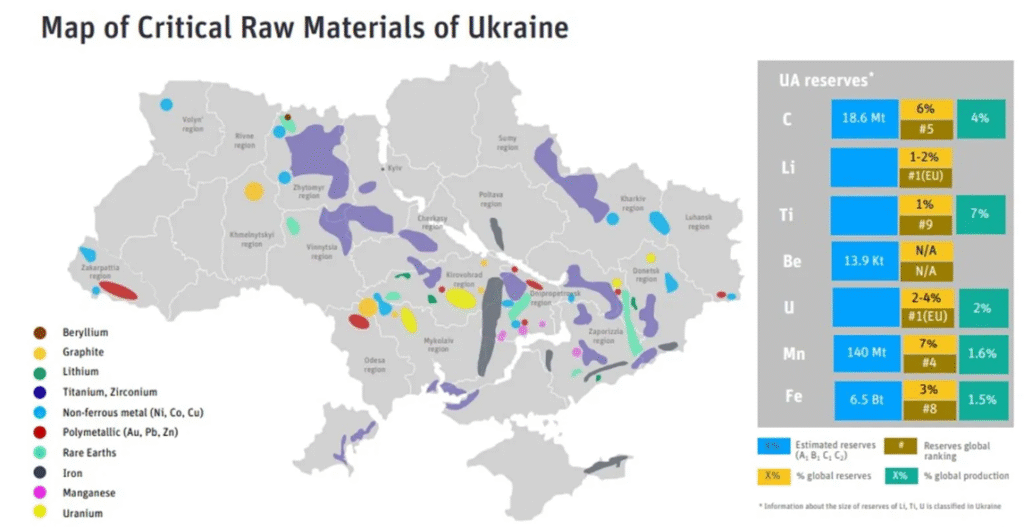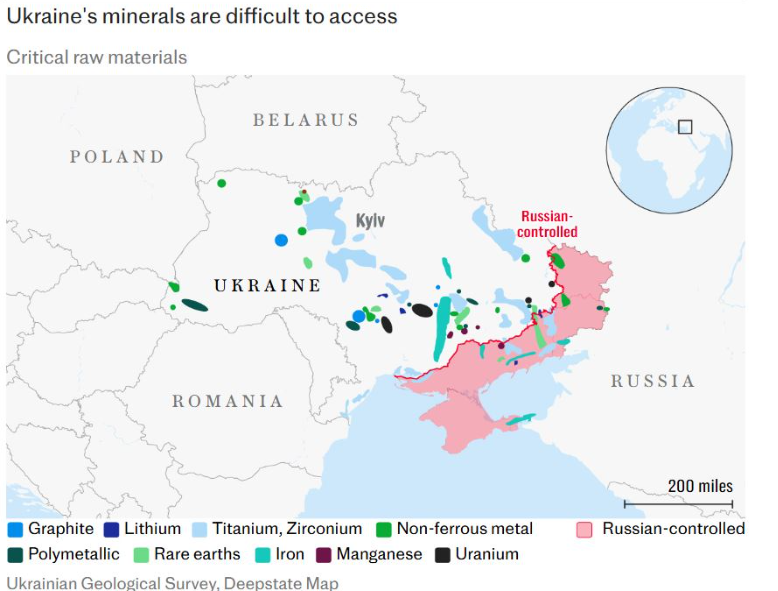The U.S. and Ukraine just signed a historic mineral deal, and experts believe it could reshape global resource power and shift the economic balance away from China and Russia.
Table of Contents
1. What Is the U.S.-Ukraine Mineral Agreement?
On April 30, 2025, the United States and Ukraine signed a landmark agreement granting the U.S. prioritized access to Ukraine’s extensive reserves of critical minerals. These include rare earth elements (REEs), lithium, titanium, and more—essential for technology, defense, and renewable energy.
This pact also creates a joint reconstruction investment fund to help Ukraine rebuild its economy after ongoing conflict, while benefiting both nations economically and strategically.

2. What Critical Minerals Are Involved?
Here’s a list of the critical minerals featured in the deal and why they’re crucial to American industries:

| Mineral | Primary Use | Why It Matters to the U.S. |
|---|---|---|
| Lithium | EV batteries, energy storage | Reduces dependence on China |
| Titanium | Aircraft, defense, medical devices | Lightweight and highly durable |
| REEs (Rare Earth Elements) | Electronics, wind turbines, radar systems | Essential for defense and clean energy |
| Graphite | Batteries, lubricants | Currently mostly imported from China |
| Cobalt | Rechargeable batteries | Key component in clean energy tech |
The deal directly aligns with the Biden administration’s critical mineral strategy to secure domestic supply chains and reduce vulnerabilities.
3. Why This Deal Matters for the U.S.

This agreement is more than just trade—it’s about geopolitical positioning, economic security, and future-proofing American industries.
Key Benefits:
- Reduces dependency on China and Russia for critical minerals.
- Strengthens America’s clean energy transition by ensuring domestic mineral supplies.
- Bolsters U.S. national security, especially in defense tech and aerospace.
- Supports the electric vehicle (EV) revolution, a major U.S. policy priority.
According to the U.S. Geological Survey, over 90% of certain rare earth imports came from China in recent years. This agreement is expected to lower that figure significantly by 2028.
4. Ukraine’s Role in the Global Supply Chain
Ukraine is home to:
- 22 out of the 34 minerals deemed “critical” by the European Union.
- The largest titanium reserves in Europe.
- Vast untapped lithium reserves in regions such as Donetsk and Zaporizhzhia.

Ukraine’s Critical Mineral Advantage
Ukraine's Mineral Advantage
|
-----------------------------------------------------
| | |
Titanium Reserves Lithium Deposits Rare Earth Elements
| | |
Aerospace & Defense EV Batteries & Energy Tech, Military, Green Tech
This makes Ukraine a key global player in the clean tech and defense supply chain.
5. Key Provisions of the Agreement
Here’s a breakdown of what was signed and what it means in real terms:
| Provision | Description |
|---|---|
| Preferential Access | The U.S. has top-tier rights to extract and invest in Ukraine’s mineral sectors. |
| Revenue Model | Profits from the partnership go into a joint fund. No withdrawals allowed for 10 years. |
| Ownership Clause | Ukraine maintains 100% ownership of its natural resources. |
| Infrastructure Pledge | U.S. firms to co-finance rail, road, and mining upgrades. |
| Environmental Oversight | Both nations commit to international green mining standards. |
This structure ensures long-term trust and economic uplift for Ukraine, while giving the U.S. stable access to critical minerals.
6. Global Reactions and Strategic Impact
United States:
- The deal is viewed as a strategic win for national security and supply chain resilience.
- U.S. firms like Tesla, Lockheed Martin, and GM may benefit from direct sourcing.
European Union:
- Watching closely—Ukraine has a pending EU membership track.
- Potential for collaboration or competition in mining investments.
China:
- Expressed concern as the deal challenges its global mineral dominance.
- May look to deepen ties with Africa and South America in response.
Russia:
- Dismissed the deal as Western provocation.
- But analysts suggest it significantly weakens Russia’s influence over Eastern European economies.
7. Future Outlook: Opportunities and Risks
While promising, the deal must overcome these challenges:
1. Infrastructure Gaps
Much of Ukraine’s mining infrastructure is outdated or damaged due to war. U.S. investment will need to modernize and secure these facilities.
2. Security Risks
Mining operations near contested areas may be exposed to cyberattacks or physical threats.
3. Environmental Management
Ukraine must balance rapid extraction with EU-aligned sustainability goals.
4. Political Transitions
U.S. elections and shifting administrations could influence future support and investment continuity.
8. Conclusion + Data Insight
The U.S.-Ukraine mineral deal represents a major shift in how the West secures resources critical to national security, green energy, and advanced technology. If executed as planned, it could:
- Reduce U.S. reliance on China for rare earths by up to 50% by 2030.
- Contribute over $2.7 billion annually to Ukraine’s post-war economy.
- Support over 45,000 U.S. jobs in EV, aerospace, and defense industries.
The world is entering a new phase of resource diplomacy, and this deal sets the template for future global partnerships.
[USnewsSphere.com / ki]





